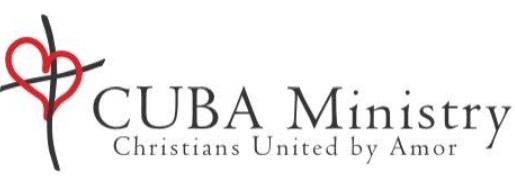HISTORY OF CUBA MINISTRY

WANT TO KNOW SOME FACTS OF THE METHODIST CHURCH IN CUBA AND OUR CURRENT CUBA MINISTRY?
Methodism took root in “fertile though troubled soil” in Cuba during the last years of the Spanish/American war in the late 1800’s. when the Florida Conference of the Methodist Church South commissioned 2 Cuban pastors living in Key West to open a mission in a Havana hotel,
After the war, American missionaries began to expand the work that had been faithfully begun, through the generosity of the Methodist Church in the U.S., and specifically the Florida Conference. The means were made available to expand the work across the 600 mile island. It became evident that the destiny of Cuban Methodism was linked to the destiny of Florida Methodism. In 1968 Bishop Armando Rodriguez was elected the first bishop of the now autonomous church. He served through 22 years of great crises for the Cuban church. By the triumph of the Castro revolution of 1959, there were 53 US missionaries, with a growing number of Cuban ordained clergy. By 1960, 9,000 Cubans professed Methodist Christianity. When the United States severed relations with Cuba in 1961, all missionaries had to leave, and 95% of the ordained Cuban clergy found sanctuary in the US, mostly in Florida. Churches were suppressed from all activities except worship in houses of worship. Because of the U.S embargo on Cuba, in 1963, the Board of Missions of the Methodist Church was forced to cut off the support funds to the Cuban church, a sum that consisted of 60% of the conference budget
The Methodist Women and Youth sustained the church as they trained lay pastors to fill the vacancies of the absent ordained clergy. By 1991, the government began loosening its grip on the churches. UMVIM teams from the US began to send teams to restore the deteriorated churches. People of faith were allowed to hold jobs and send their children to school. Home prayer and Bible meetings in homes flourished.
Today, a miracle has taken place. Currently there are over 500 appointed churches (mostly house churches as the government has not allowed construction of new temples). There are over 700 missions; more than 60,000 Cubans worship in Methodist churches and missions
In December, 1994 Bishop H. Hasbrouck Hughes visited the Methodist Church in Cuba. Cubans gravitated to him with great interest for re-establishing the relationship with the Florida Conference – interrupted for many years. The meeting of Cuban leaders with Cuban Americans was a huge success as the mostly Cuban exiled community embraced the Cuban church leaders with open arms.
In July, 1996 the ministry, then named Cuba/Florida Covenant, formed a Task Force which convened to define the development of the ministry with the support of Bishop Cornelius Henderson. This Task Force developed sister partnerships between the Cuba district and churches for the purpose of prayer and building relationship with Cuban brothers and sisters.The draft of the Cuba/Florida Covenant was presented and ratified at the 1997 Florida Annual Conference by both the Cuba and Florida Bishops signing the Covenant document.
More next week about how these relationships are formed and maintained, such as the sister relationship between Wesley MUMC and Duranona and Media Luna Methodist Churches.
